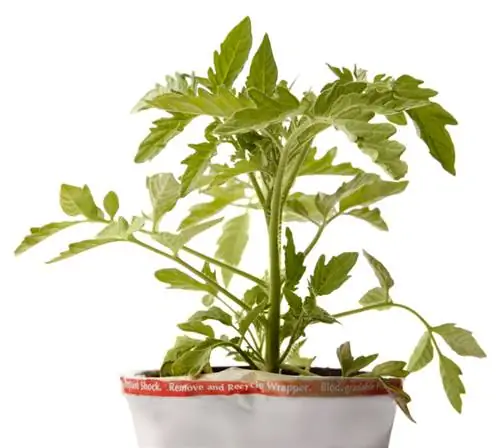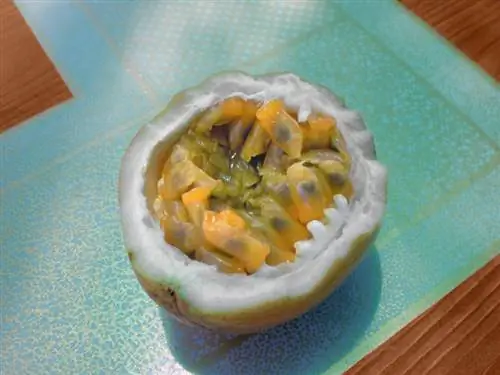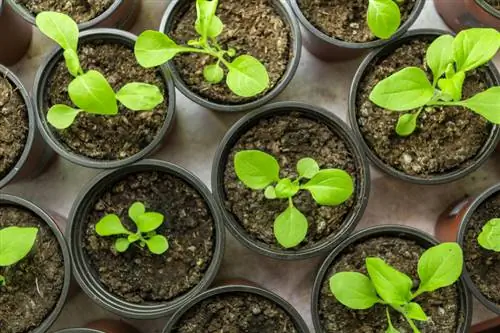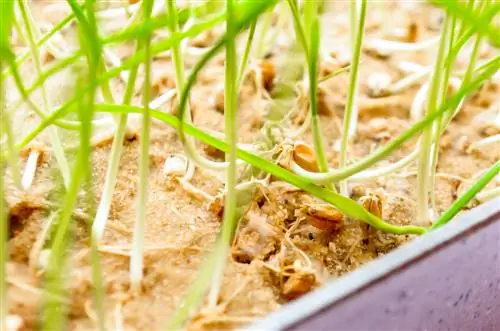- Author admin [email protected].
- Public 2023-12-16 16:46.
- Last modified 2025-06-01 06:02.
If you want to plant pampas grass in the garden, there are various ways to propagate pampas grass without buying a new plant. The most popular way is to divide the plant. What is unknown, however, is sowing pampas grass.
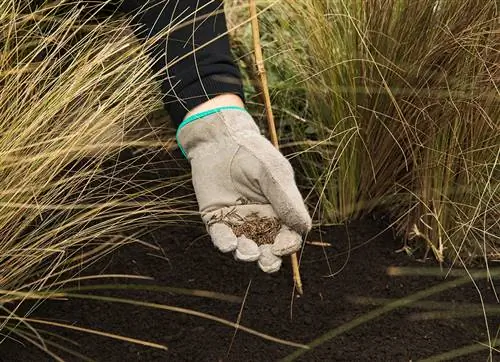
How do you sow pampas grass?
To sow pampas grass: Grow seeds indoors from April onwards, press them lightly into potting soil and do not cover them. Moisten the soil, cover with foil and ventilate daily. After 2-3 weeks the first seedlings appear, which can later be planted in the garden.
How is pampas grass sown?
Pampas grass is preferred indoors from April. The seeds are lightly pressed into the potting soil, but not covered with soil. The soil should be well moistened and the pot covered with cling film. The bag or foil is removed daily for ventilation. After two to three weeks the first seedlings appear.
Appearance of pampas grass seeds
Keeping pampas grass in your own garden is no problem. But at the beginning everyone is faced with a choice: seedlings or pampas grass seeds. The latter are sown around a month earlier in a warm greenhouse or in the apartment. Growing the impressive ornamental grass from seeds takes a little more time and effort.
All that remains is the joy of watching the plant grow from an early age. In addition, many exotic varieties are only available as seeds. Small garden shops often only have one or two varieties on offer. And seeds are usually significantly cheaper than young plants.
Appearance
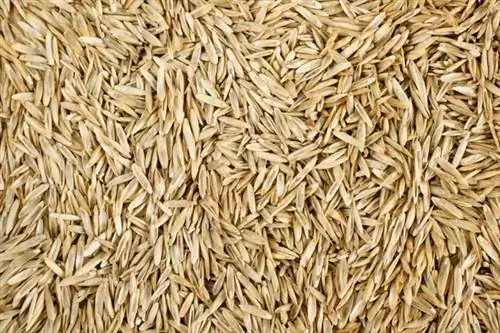
Pampas grass seeds have an inconspicuous appearance. At first glance they look likeconventional lawn seeds No wonder, because they belong to the same plant family. Small, elongated and - depending on the variety - light yellow, gray or brownish in color, the seeds also resemble unpeeled rice grains.
Harvesting and propagating seeds
The seeds for sexual reproduction develop from the sought-after plume flowers. It should be noted that pampas grass is dioecious; So it is either a purely male or purely female plant. Therefore, sexual reproduction does not usually occur in our region because almost only the female specimens are found as ornamental plants in home gardens. Because male pampas grass produces only a few and sparse flowers.

Theharvest is not recommended - also for practical reasons. While purchased seeds are always female, seeds from your own harvest contain male specimens. However, beautiful, female plants always develop from the high-quality seeds from HappySeed (€2.00 on Amazon). You will receive between 50 and 100 seeds that grow into easy-care pampas grass with large inflorescences.
Sowing pampas grass: directive
Pampas grass should be grown indoors about two to four weeks before the ice saints, so that it can be put outdoors or in the pot in time after the frost. To increase the chances of success, all seeds can be sown - depending on the space. Excess young plants are ideal for giving away!
Material
To successfully grow pampas grass you need:
- Sowing soil (low nutrients, but water-retaining)
- Perlite or coconut fibers to loosen the substrate
- Pampas grass seeds
- Growing trays (10 cm diameter)
- Large freezer bags
How to do it
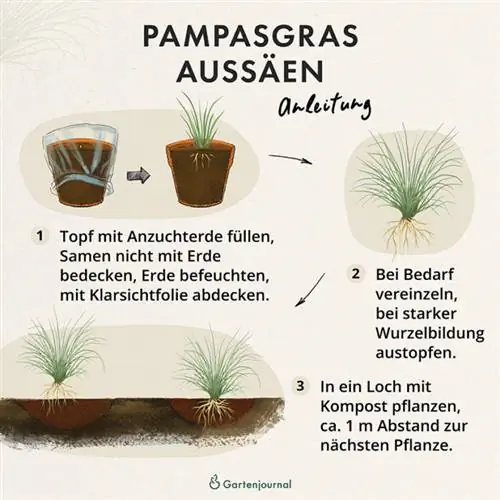
- Mix some perlite or coconut fibers into the sowing soil and fill it into the seed tray.
- Press five pampas grass seeds per bowl lightly into the soil. Since these are light germinators, they must not be covered with the substrate.
- Moisten the soil well with a spray bottle, but do not soak it. Be careful not to wash away the seeds.
- Put the freezer bag over the growing tray so that there is a little air circulation over the substrate.
- Place the bowls in a sunny place where they have between six to seven hours of light. Pay attention to temperatures between 20 and 25 °C.
- Carefully moisten the seeds daily with the spray bottle; remove the bag to air it. Too much water can lead to rot.
- The first seedlings should sprout after about two to three weeks.
- Prick out the seedlings individually and grow them in a pot to a height of approx. 7-10 cm.
- Ideally plant in the garden after the Ice Saints. A sunny location is preferred. The planting hole should be around 20 cm in diameter and completely enclose the roots. Leave a good 1 m distance between other plants. Cover with compost and humus-rich soil.
Offshoots of pampas grass by division
If you already have a beautiful and he althy variety of pampas grass in your garden, you can easily propagate the ornamental plant by dividing it. To do this, carefully lift the plant's clump out of the ground. Parts of the clump and the corresponding roots can be separated with a spade. Then you plant both perennials again separately. This procedure is recommended in late spring after pruning.
FAQ
Sow pampas grass outdoors or in pots?
Pampas grass seeds are best preferred in pots because the chances of success are higher there. It can simply get too cold outdoors. And unfortunately, pampas grass seeds are on the menu of birds who are happy about the food in the wild and quickly peck at it.
Does pampas grass form offshoots?
Pampas grass forms a clump that grows wider from year to year. With a sod-turning, the clump can be divided into the desired size so that it can take root again as a cutting at another location.
How are pampas grass seeds harvested?
Pampas grass seeds can be harvested yourself in autumn. To do this, wrap the flower spike in a bag and shake it until the seeds come loose. Alternatively, the seeds can also be picked out by hand.
What do pampas grass seeds look like?
Pampas grass seeds are very similar to conventional lawn seeds. They are light yellow, gray or brownish, elongated and very small. Whether the seeds are female or male cannot be seen by untrained eyes.
How is pampas grass sown?
Pampas grass is either carefully grown in a seed tray or distributed in large quantities outdoors. In both cases, care should be taken to ensure a moist substrate.


